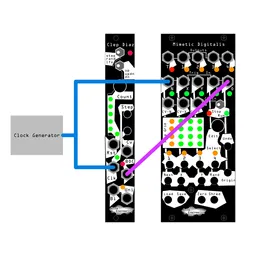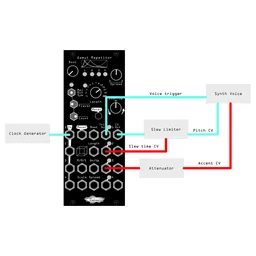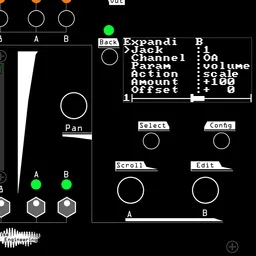Modular is largely a monophonic medium (with some exceptions!), and making simple instruments seem wide in our patches can be a bit of a puzzle. Luckily, there are some simple techniques that can lead to great results. Today, we’ll explore a few easy ways to add some interesting stereo-ness to a sound.
The concept: independent processing
This is a technique that I used extensively even before I got into modular. If we take a mono sound, split it, and process each copy with independent effects, we can then pan each processed copy to the left and right. With some tweaking, this can add a lot of width to our sounds and make them much more interesting.
In modular, this is even easier: many modules, like Pura Ruina, have multiple outputs, and we can run two different outputs to the left and right inputs of a mixer.
Of course, there are a plethora of modules we can do this with: you could use two separate modules to do independent processing, or you could use a module like Terci Ruina that has multiple processing paths to process left and right.

A favorite technique here at NE is to use two of the same module with slightly different settings panned hard left and right to achieve stereo width. This is especially fun with modules that can be voltage controlled, as the width and level can change as a patch progresses.
Let’s have a listen to what this can sound like using a Pura Ruina processing a Cursus Iteritas:
Other ways to stereo
This isn’t a new technique: modules like the Serge Resonant Equalizer and Buchla Spectral Processor, which are fixed filter banks, feature a pair of comb outputs that are mixes of alternating filter bands. By panning each comb output to left and right, an interesting stereo effect is achieved. This can be done with newer filter banks, too, like the Frap Tools Fumana or Sputnik Spectral Processor, or in more unusual ways with simple filters that have multiple types of output, like highpass and lowpass.
Of course, there are many dedicated effects that are used extensively to add width to sounds. Things like chorus, reverb, and delay can all be used to add lots of width to our mixes. However, the difference is that things like reverb add space to sounds, which may or may not be desirable. Using techniques like we did in the first section is a nice alternative when you want width but also as much clarity as possible.
An extremely simple stereo effect takes inspiration from old organ effects, and requires no processing at all. If your mixer has CV over panning, modulating it with a relatively fast LFO will change its timbre slightly and also move it all over the stereo field. CVing the LFO’s rate adds an extra level of expression, too.
Stereo width is an oft-discussed topic here at Noise Engineering, and when designing the Ruina Versio, the Phase parameter was added with the idea of mono-to-stereo effects in mind. In fact, all of the Versio firmwares can do some sort of mono-to-stereo processing – from wide reverbs in Desmodus and Elects to chorus in Ampla, or independent left/right granular triggering in Melotus:






